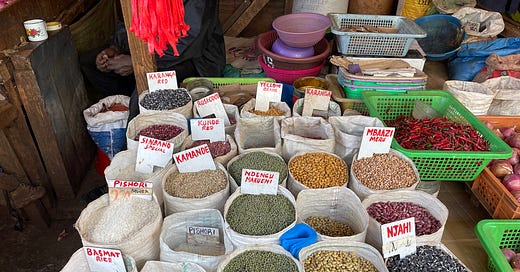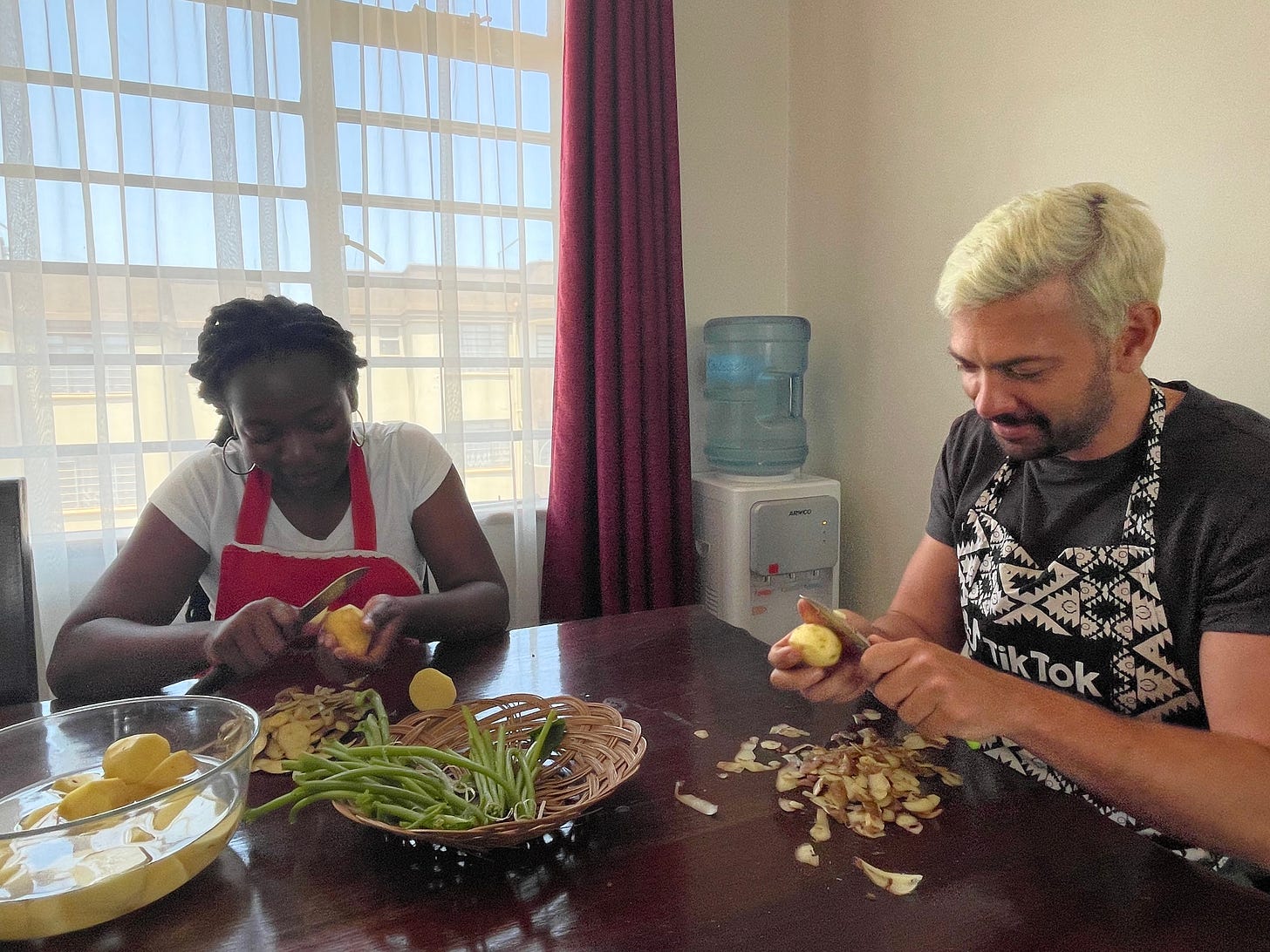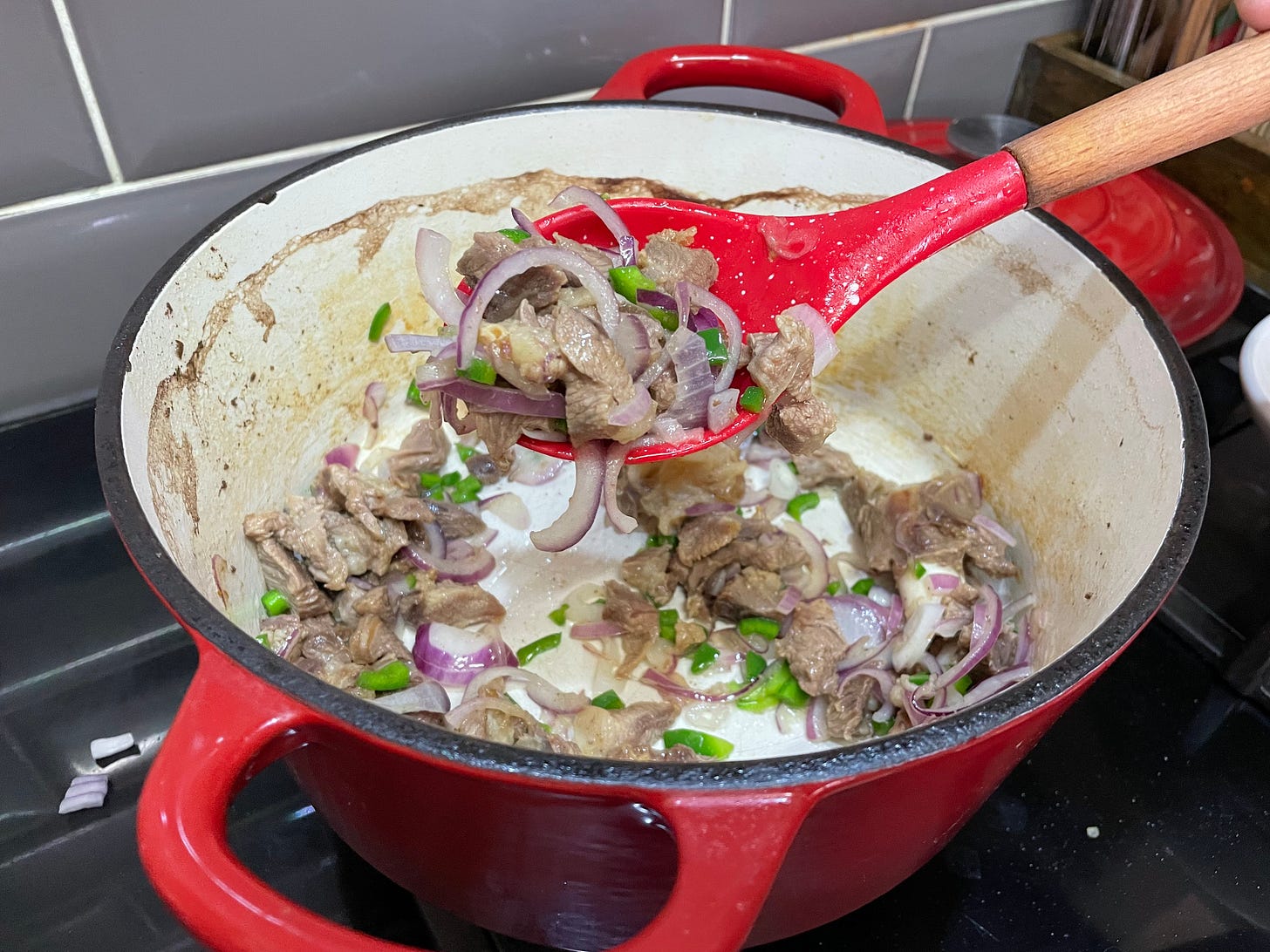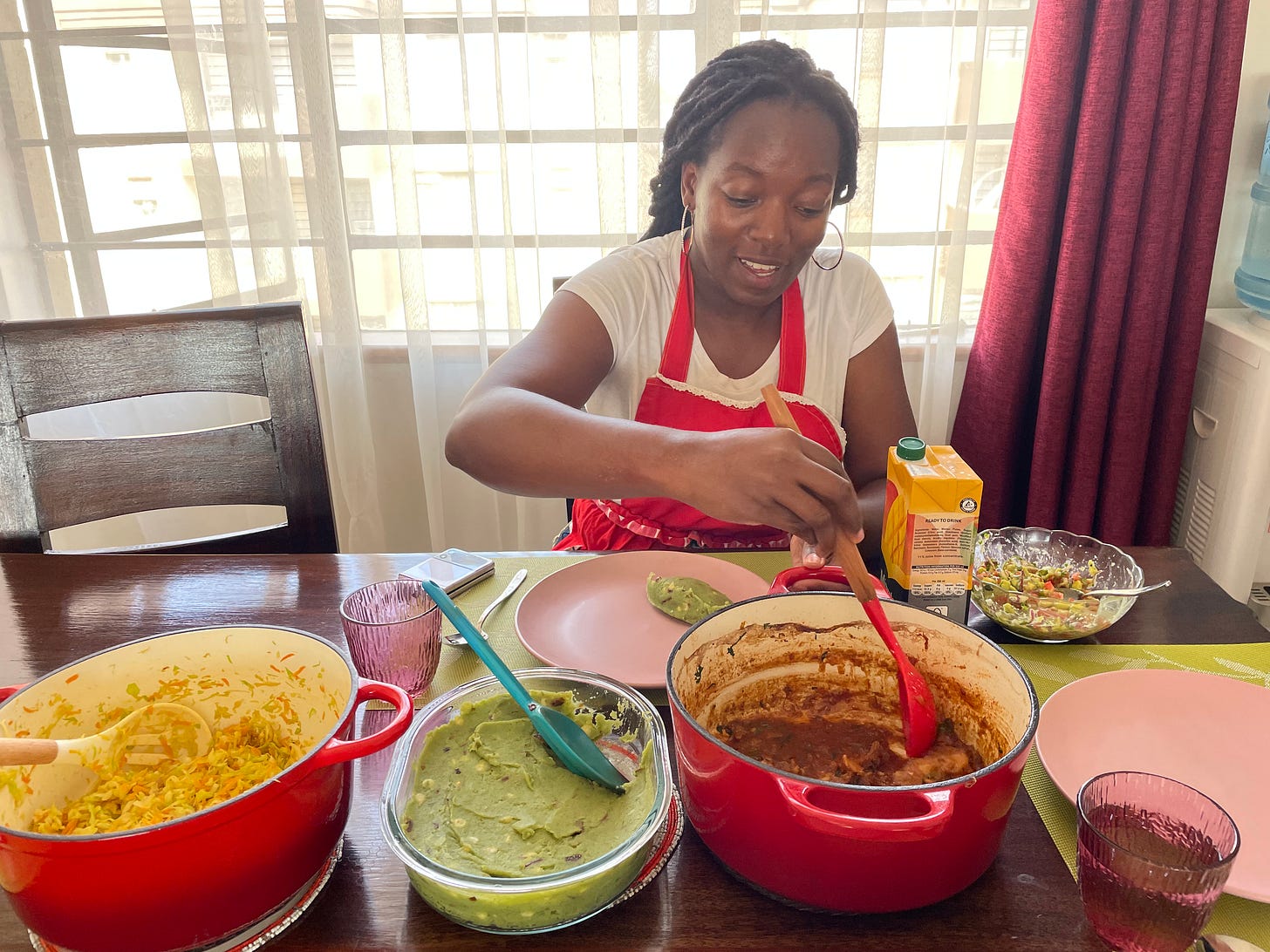We meet our host, Wairimu Muturi Wakaba, outside of a supermarket in the lively Westlands neighborhood of Nairobi. Wairimu (@cookingwithnimoh on Instagram/Youtube) is a native food blogger with a focus on sharing traditional Kenyan recipes. Today, my friend Nick and I are joining her for a local market tour and cooking class, an experience she offers on Airbnb.
11:45 am - hop on a matatu
Living in New York, I thought I was pretty proficient at jay-walking, but I feel completely unprepared to handle the hectic streets of Nairobi. While navigating the bustling, multi-lane road to the bus stop, I focus solely on Wairimu, following her like a shadow as she ushers us safely across the street.
The matatu is a popular form of mass transportation in Nairobi. Officially, they’re privately owned minibuses that operate as hop-on/hop-off style shared taxis. However, with their colorfully painted exteriors, the Afrobeats blasting from the speakers, and the screen at the front playing music videos by one DJ Flamezz, one could easily believe that they were on a party bus instead.
To my untrained eye, there doesn’t seem to be any discernible rhyme or reason to the matatu system - there are no marked bus stops or any apparent schedule. We wait for the vehicle to fill up, and then with two slaps on the side of the bus, we’re off!
Noon - make the rounds at Kangemi Market
Wairimu has been coming to Kangemi Market for groceries for the past six years. Over that time, she’s built relationships with many of the vendors, and as we walk through the narrow alleys of the market, it’s clear that she’s a local celebrity.
We meander the labyrinthine market, and again to my untrained eye, it seems as if the countless stalls are selling basically identical offerings. I ask Wairimu how she decides where to acquire specific ingredients. She explains that she doesn’t go to any one stand in particular, because she will always optimize for the freshest organic produce. Instead, she takes her business to many different vendors, and it’s not uncommon for a certain vendor to tell her, “I can’t sell anything to you today, because you will be disappointed by the quality.” I’m touched by this display of mutual care and reciprocity in something as quotidian as a trip to the market.
We make the rounds, picking up white corn here, red onions and tomatoes there, potatoes and pumpkin leaves from a jovial woman in vibrant headwear, and goat meat sawed directly off the leg hanging in the window at the butcher shop. Throughout this process, I am struck by how far removed I am from the source of my food, as I shop for neatly (often wastefully) packaged goods at my conglomerate grocery store.

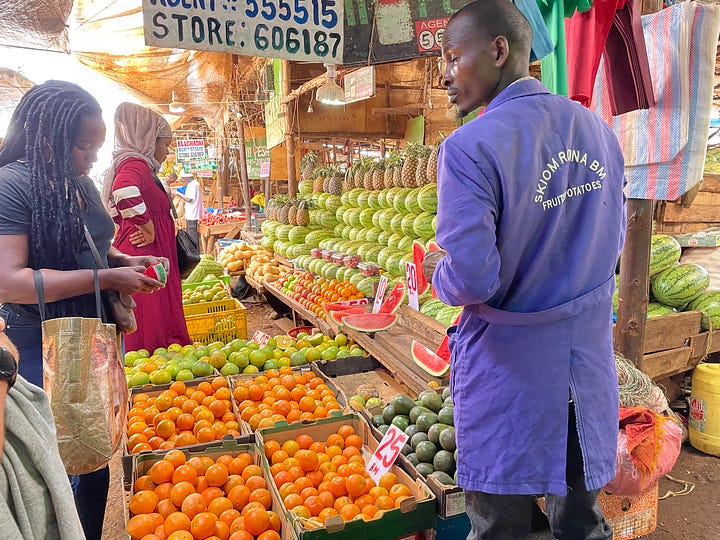
1:00 pm - arrive at Wairimu’s home, begin prepping
After another quick matatu ride, we arrive at Wairimu’s home in the suburbs of Nairobi. She puts us to work, washing and prepping the vegetables while she sets the goat meat on the stove in a large dutch oven to begin simmering.
Today we are making a traditional Kenyan meal consisting of goat stew, sautéed cabbage, a popular local salad called kachumbari, and a traditional starchy side called mukimo. Each of 40+ tribes in Kenya have their own unique rendition of mukimo; today we are making the version of Wairimu’s tribe. The Kikuyu are the largest ethnic group in Kenya and are mostly concentrated around Mount Kenya. Their mukimo is green from the addition of pumpkin leaves, which grow abundantly in their region.
2:00 pm - cooking is underway
One by one, the stove tops are lit and the potatoes are boiled then mashed while the pumpkin leaves are blanched then blended into a verdant puree. As Wairimu shows us how to achieve perfectly caramelized onions, she tells us about her journey with her growing food blog.
Growing up, Wairimu was always surrounded by food at her mom’s restaurant. Her earliest memory is playing with a spilt sack of potatoes. As teenagers, she and her brother helped out with the family restaurant, and her brother eventually decided to use his college fund to start his own fast food joint.
Wairimu opted to attend university to study law, and was the first person in her entire family to graduate from college. However, her passion did not lie in becoming a lawyer, and she found her mind constantly drifting back to food.
In 2018, Wairimu started posting photos of the food that she was cooking at home everyday. She thought, “If I’m making the food anyway, I may as well share it.” Unlike other local food bloggers who tried to appeal to audiences with flashy western cooking techniques, Wairimu stuck to traditional Kenyan home-cooking, sharing recipes she learned from her family and tribe. She believes that audiences connected with the authenticity of her blog, which really took off in 2020.
The smells wafting from the stovetop at this point are absolutely intoxicating. The warm aroma of alliums mixes with the distinct gamey scent of goat meat, then with the fragrance of sizzling tomatoes, which are added to deglaze the bottom of the cast iron pan. As someone who tastes very frequently as they cook, it’s taking everything I have not to try a little bit of each dish.
I employ a sick and rather ineffective method of distracting myself from my hunger: I ask Wairimu to tell me more about Kenyan food. I learn that garlic and ginger are basically in everything, courgette and eggplant are frequently used in stews, and there is a strong Indian culinary influence that dates back to when colonizers brought Indian subjects over to build the Kenyan/Tanzanian railway.
Counter to what I’m smelling, Wairimu says that many foreigners actually complain that Kenyan food can be quite bland. She explains that since it’s difficult to come by quality healthcare, many citizens view food as a first-line form of medicine. They prefer to use fresh ingredients and steer clear of canned spices that, while strong in flavor, tend to include preservatives that they consider unhealthy.
Again, I’m struck by how eating fresh and organic whole foods is the norm here, not something that you pay a marketing premium for at Whole Foods (while somehow still ending up with inferior products). In fact, Kenyans take organic eating so seriously, that they’ll steer clear of the perfectly shaped and colored produce that line the shelves of American supermarkets, for fear of the use of GMOs.
3:00 pm - lunch is served!
I skipped breakfast to have extra room for this meal, and I am beginning to second-guess my decision until we sit down to the veritable feast we’ve lovingly prepared. Wairimu shows us how to prepare the perfect representative bite, wrapping a little bit of each dish up in chapati (aka roti). I take my first taste, and am suddenly grateful that I’ve saved all this extra room in my stomach for the inevitable second and third servings to come.
When I manage to look up from my plate, I ask Wairimu about the biggest challenge that she faces with her food blog. She mentions that it’s difficult to keep up with the ever-changing social media algorithms in order to continue reaching and engaging her audience. In terms of the future of Cooking with Nimoh, she shares that she’s proud to have created interest in Kenyan home-cooking, and hopes to continue to highlight traditional Kenyan cuisine both at home and around the world.
Thank you so much to Wairimu for hosting such a wonderful and authentic experience! I’m so grateful that through her local market tour and cooking class, I got to see and taste a side of Nairobi that I wouldn’t have otherwise. Be sure to follow Cooking with Nimoh on Instagram/Youtube and check out the link below for a tutorial on how to cook mukimo at home!

